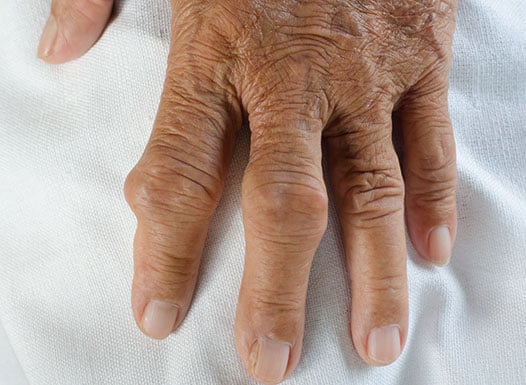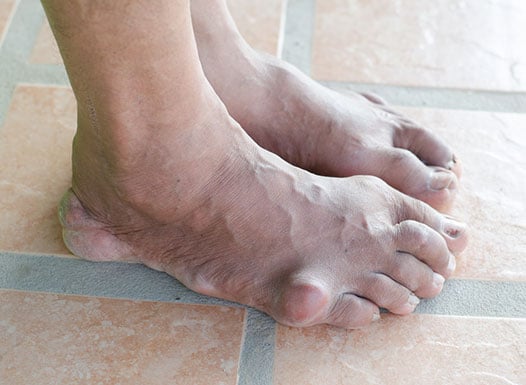The first attack of gout often occurs in the big toe. Historically, this was termed Podagra and was considered the ‘king of diseases and the disease of kings’. The onset is usually rapid, with the development of pain, redness, swelling and exquisite tenderness of the affected joint, often over a few hours. Sometimes the triggering factor can be identified, such as a recent binge of alcohol or purine rich food, local trauma, or commencement of certain medications. Without treatment, an attack of gout usually settles within seven to ten days.
As the uric acid level continues to build up, the attacks become more frequent, with each attack lasting longer and more joints become involved.
Occasionally the inflammation can result in fever, making it very difficult to differentiate from an infected joint and occasionally cellulitis, which is an infection of the soft tissues beneath the skin.
Eventually the uric acid crystals accumulate into large visible nodules under the skin, called tophi, in addition to their presence inside joints. The inflammation induced by the accumulation of these crystals ultimately causes erosion of the bones affected, resulting in permanent joint deformity, and occasionally rupturing of the skin overlying the tophus (which is then at risk of becoming infected).





